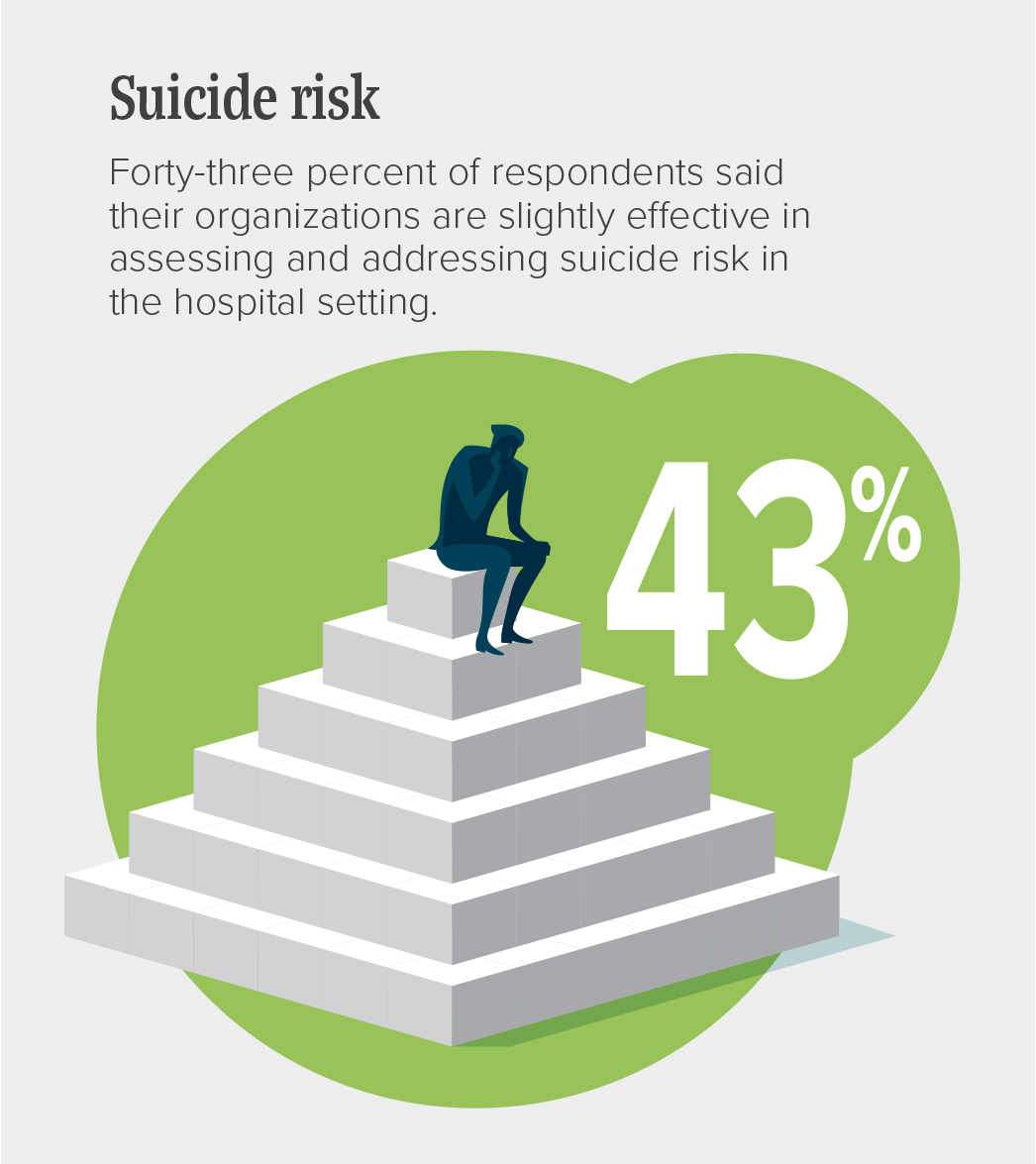Annual Industry Survey: Assessing Suicide Risk
Healthcare organizations have plenty of safety-related issues to worry about. Assessing and addressing the risk of suicide is a serious concern that has also been a regulatory hotspot in recent years.
Asked to rate their organization’s effectiveness in assessing and preventing suicide risk, 43% of respondents to the 2019 Patient Safety & Quality Healthcare Industry Outlook Survey said that their organization is slightly effective at addressing the problem. Another 38% said their organization is highly effective.

Surveyors have found many shortcomings in how hospitals handle suicide risk assessment. In the survey, 15% of respondents indicated their organization was slightly ineffective in its suicide risk assessment, and another 4% said they were highly ineffective.
Last November, The Joint Commission (TJC) announced revisions to its suicide prevention National Patient Safety Goal (NPSG). NPSG 15.01.01 now has seven elements of performance (EP), up from three. All the changes are listed in R3 Report 18 and will take effect July 1, 2019. The update applies to all TJC-accredited hospitals and behavioral healthcare organizations.
The report says the new EPs aim to improve quality and safety of care for patients treated for behavioral health conditions and who are identified as high-risk for suicide. TJC officials say the revised requirements are based on more than a year of research, review, and analysis with multiple panels convened by TJC and representing provider organizations, suicide prevention experts, behavioral facility design experts, and other key stakeholders.
The PSQH survey report analyzes this and other patient safety and quality issues that concern healthcare organizations. Visit here to download the full report.
To learn more about this topic, click here.
